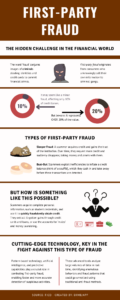As prices continue to rise in Spain and across the European Union, the outlook for growth and economic recovery is beginning to look bleak. The Spanish economy, in particular, has gone from seeing the biggest price drops during the pandemic to seeing the biggest increases in the EU. Currently at 8.9%, inflation has become one of the main problems facing families and businesses. In March, it reached a record 9.8%, the highest figure for 37 years and five times greater than the EU’s inflation target. Against a backdrop of economic volatility and uncertainty, these price rises are causing great concern for domestic and international organisations alike.
Increases in the price of commodities, coupled with the economic and social consequences of the war in Ukraine, are hitting the global financial system hard as supply chains for goods and services suffer ever-greater disruption. This, in turn, is putting greater pressure on both families and businesses, which will lead to falls in revenue, growth and employment.
This uncertain situation is putting monetary stability under strain, and this is already having consequences for consumer finance. Financial institutions have recently warned that rejections for loan applications from both homes and businesses are increasing, and this is having a negative impact on the economy, stalling investment projects and tightening finances for families.
As a result, financial service providers are playing an increasingly important role in keeping customers financially solvent. As new players in the financial sector, fintechs are transforming traditional channels of credit to offer consumers a wider range of products and take advantage of those market niches that have, until now, been neglected by traditional institutions. Consumers are not able to stop paying for basic needs like food or transportation, where inflation is having a notable impact, but they have begun to rein in spending on other unnecessary products in order to keep their finances in check.
Despite the expected recession, technology is helping consumers to continue making purchases. Firstly, technology allows people to find and compare the best offers online, helping them to make sure that they get the best deal, and secondly, allows sellers to offer simpler or more attractive payment terms. Some of these more flexible options include BNPL (Buy Now, Pay Later). This “new” payment method is becoming increasingly popular amongst businesses and consumers alike as it allows the consumer to break up payments so that they can assume a lower financial burden in the short term. Furthermore, BNPL offers increased flexibility and involves no additional fees. The future of consumer credit is inextricably linked to the option of being able to pay for small purchases in several payments. This benefits the lender because the consumer is more likely to make a purchase, and it also benefits the consumer because they are able to get the products or services that they need when they need them. However, there are still risks, and lenders will need to use data to manage these risks efficiently to ensure that they are not overexposed to the risk of non-payment.
According to the Bank of Spain, consumers have now funded over €3 billion of small expenses using revolving cards. This could lead many consumers to build up debt due to high interest rates, and worryingly, the use of these cards is expected to rise if the current situation does not change.
The present scenario clearly does not afford for much optimism. However, we will need to wait until the end of the autumn before we find out the true impact of these trends. At the moment, inflation is putting a strain on the finances of businesses and families, preventing their ability to save or invest and creating an increasingly more unstable market. Regulatory institutions like the US Federal Reserve or the European Central Bank (ECB) have raised interest rates in an attempt to control inflation. However, this makes loans more expensive and less accessible, leading to less expendable income and investment, and ultimately, the ghost of a recession can already start to be seen.
Recently, the ECB raised interest rates for a third time, increasing them by 75 basic points to 2%. Persistently high levels of inflation in the eurozone, which reached 9.9% in September, and the expectation that prices will remain high for some time, do not leave much room for another decision before 2023. As far as Spain is concerned, despite the economic resilience seen in the first half of the year thanks to tourism and job creation, the most recent indicators suggest economic stagnation in the third quarter. According to the Independent Authority for Fiscal Responsibility (AIReF), it is expected that Spain will enter a ”technical recession” in the last quarter of 2022. Despite the “slightly positive” growth in national GDP seen from July to September, the economy is expected to contract and enter “negative territory” in the last third of 2022 and the first third of 2023.




